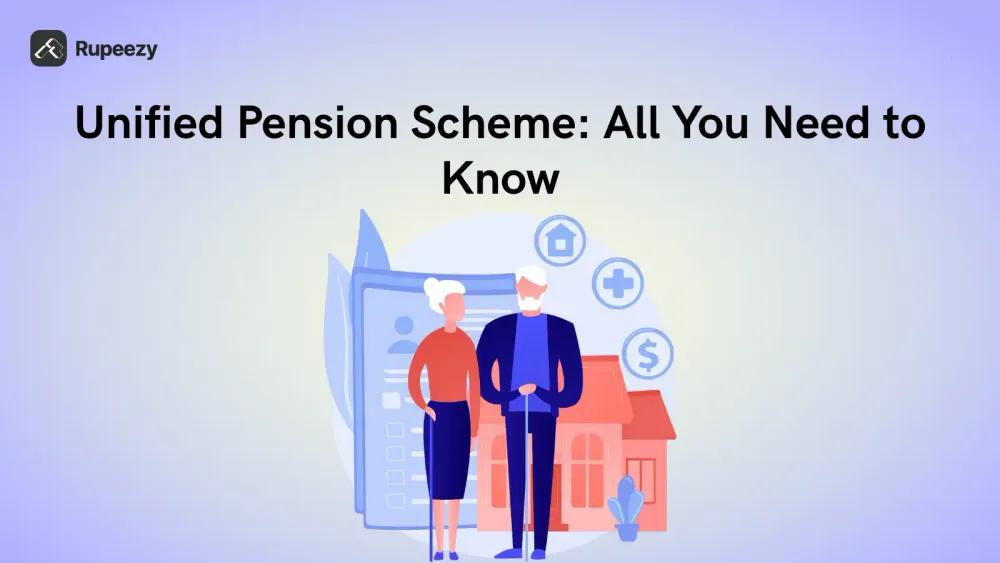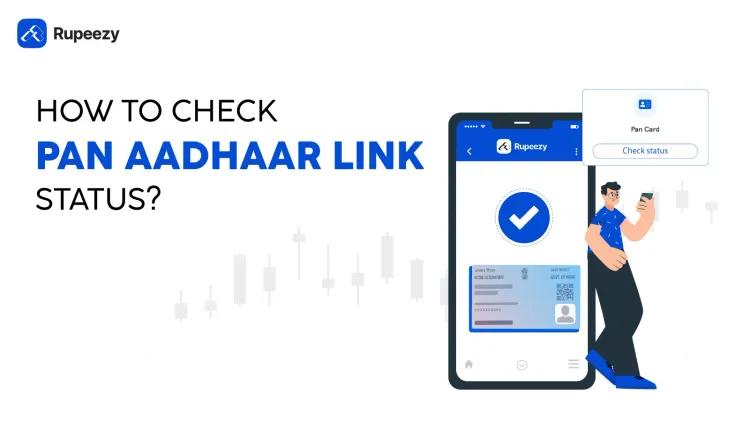Unified Pension Scheme: All You Need to Know


00:00 / 00:00
The government launches multiple policies to support the citizens. Starting from the insurance plans to savings schemes, each of these plans is designed to fulfil a certain aim. Like the Post Office Monthly Income Scheme, which was designed to offer a stable income in this fluctuating market condition.
In this list, there is one scheme that is designed with the focus on your retirement. This is the Unified Pension Scheme. It focuses on providing financial security for workers across both organized and unorganized sectors.
But what is this exactly all about, and who can register in it? Well, to explore the answers to all these questions, read the guide here.
What is a Unified Pension Scheme?
The Unified Pension Scheme (UPS) is a government initiative. It merges different pension systems into a single framework. It is designed to provide steady income support after retirement. This is also a plan to save money from your salary in a proper manner. It is one of the plans that is accessible to both organized and unorganized sector workers.
By creating a unified structure, the scheme ensures portability, simplified contributions, and standardized rules for payouts. The key features of the UPS are as follows:
Government-backed scheme that ensures reliability and stability.
Perfect for all workers in the organized and unorganized sector.
Ensures monthly pension payout once the retirement age is attained.
Retirement age is fixed at 60 years for ease.
A proper contribution model which involves the employer and employee.
Easy portability of benefits across jobs and sectors.
Ensures you have long-term stability and benefits.
Unified Pension Scheme Details
Now that you know what a Unified Pension Scheme is, let us explore the key details of the same here.
Particulars | Details |
Scheme Name | Unified Pension Scheme (UPS) |
Notification Date | 24th January 2025 |
Effective Date | 1st April 2025 |
Beneficiaries | Existing Central Government employees under NPS (as on 01.04.2025), new recruits joining on/after 01.04.2025, and eligible past retirees along with legally wedded spouses of deceased retirees |
Last Date to Opt In | 30th November 2025 (latest government extension) |
Employee Contribution | 10% of Basic Pay + Dearness Allowance (DA) |
Government Contribution | 10% matching contribution + additional 8.5% to a pooled UPS corpus |
Minimum Service | 10 years for minimum pension eligibility; 25 years for full assured pension |
Pension Amount | 50% of the average Basic Pay + DA of the last 12 months before retirement (with 25 years of qualifying service) |
Minimum Assured Pension | Rs. 10,000 per month upon superannuation. This is valid with at least 10 years of service. |
Eligibility for Past Retirees | Must have retired on/before 31.03.2025. One should not be retired as a penalty. One should have a minimum 10 years of service and have a legally wedded spouse for family pension. |
Portability & Security | Benefits are portable across jobs under Central Government; fully government-backed for reliability |
Unified Pension Scheme Eligibility
The Unified Pension Scheme (UPS) is meant to cover a wide set of Central Government employees and their families. The eligibility is as follows:
Existing Central Government Employees
You must already be covered under the NPS. Also, you must be in service as of 1st April 2025 and can opt for UPS.
New Recruits
You are a person who is joining the Central Government service on or after 1st April 2025. This way, you will automatically fall under UPS.
Retired NPS Subscribers
Employees who were under NPS and retired, took voluntary retirement, or retired under Rule 56(j) on or before 31st March 2025 can also choose UPS.
Spouses of Deceased Employees
The legally wedded spouse of a Central Government employee (covered under NPS) who retired and passed away before opting for UPS is eligible for family pension benefits.
Now you will not be eligible for the UPS scheme if:
You are removed or dismissed from the service.
Employee is superannuating or resigning before 10 years of service in total.
Unlike any other scheme, you would need your basic documents, like Aadhar and PAN, to get started.
Benefits of Unified Pension Scheme
The Unified Pension Scheme combines steady income, family protection, and inflation safeguards for a better future. The key benefits of the same are as follows:
Assured Pension
Employees who complete 25 years of service will receive half of their average basic pay and dearness allowance from the last 12 months as a pension. Those with service between 10 and 25 years will get proportionate benefits.
Government and Employee Contribution
The funding is shared. The employees contribute 10% of their basic pay plus DA. The government is adding 18.5%. This strengthens the retirement corpus.
Family Pension Support
In case of the pensioner’s death, the spouse is entitled to receive 60% of the pension amount that the retiree was drawing just before passing away.
Minimum Pension Guarantee
Employees who have served at least 10 years are eligible. They will get a minimum of Rs. 10,000 per month as a pension upon retirement. This ensures you have a safety net.
Protection Against Inflation
Pension payouts will be adjusted in line with inflation. This will be done with the help of the All India Consumer Price Index for Industrial Workers (AICPI-IW). This way, the real value of the money will remain intact.
Additional Lump Sum Benefit
Alongside gratuity, retirees will get a lump sum equal to one-tenth of their monthly emoluments (basic pay plus DA) for every six months of completed service, without affecting their assured pension amount.
Limitations of Unified Pension Scheme
UPS is a great plan launched by the government. But it is not perfect. The key limitations of the plan are as follows:
Limited Coverage
The scheme is for Central Government employees. So, state or private sector employees cannot gain the benefits.
Service Requirements
Full pension benefits are available only after 25 years of service. Those with fewer years will receive proportionate payouts. This will be quite lower actually.
Mandatory Contributions
Employees are required to contribute 10%. This is part of their basic pay plus DA. This reduces in-hand salary during service years.
Dependence on Government Policies
The scheme is designed by the government. So, if there is any chance in the policy, the scheme outcome will differ.
No Market-Linked Growth
The plan is not market-linked. Hence, your investment will not grow as per the market pace.
Limited Portability
The benefits are portable only within the Central Government service. So, the portability of benefits to other jobs is not there.
How to Apply for Unified Pension Scheme
Now that you know all the details linked to what is Unified Pension Scheme, let us explore the steps to apply for the same. So, you can apply both online and offline.
Online Process
Visit the Protean CRA website.
Click on the Unified Pension Scheme option.
Select Migrate from NPS to UPS if you are an existing NPS member, or Register for UPS if you are a new recruit joining service on or after 1st April 2025.
Fill in the required details, complete the authentication process, and submit the application.
Download and save the acknowledgement receipt for your records.
Offline Process
Go to the Protean CRA website and open the section Forms under Unified Pension Scheme.
Download the correct form based on your category:
Form
Who Should Use It
Form A1
Newly recruited employees joining service on or after 1st April 2025.
Form A2
Existing NPS employees who are in service as on 1st April 2025.
Form B1
NPS subscriber who retired on or after 1st April 2025.
Form B2
NPS subscriber who retired on or before 31st March 2025.
Form B3
Spouse of a retiree who retired on or after 1st April 2025 and has already availed UPS.
Form B4
Spouse of a retiree who retired on or before 31st March 2025 and has already availed UPS.
Form B5
Spouse of a deceased retiree who retired on or after 1st April 2025 and had not availed UPS.
Form B6
Spouse of a deceased retiree who retired on or before 31st March 2025 and had not availed UPS.
Fill out the form and attach the required documents.
Submit the form to your DDO (Drawing and Disbursing Officer) if in service, or to the Pension Sanctioning Authority/last office if retired or applying as a spouse.
The DDO verifies all the details.
It will then forward the application to the PAO (Pay and Accounts Officer).
Once done, you will get the final approval.
Conclusion
The Unified Pension Scheme is here to simplify the process of registering and managing a pension. It is your support system for the retirement years. But while this is true, it is limited only to the Central Government employees.
Plan your retirement with confidence. Use Rupeezy and the tools available to have better financial planning from the start. Invest confidently and earn better returns.
FAQs
1. Is UPS compulsory for all new Central Government employees?
Yes, all employees joining Central Government service on or after 1st April 2025 will automatically come under UPS without needing to opt in separately.
2. Can an employee switch back to NPS after choosing UPS?
No. This is not possible. Once you select UPS, you cannot go back to the NPS.
3. What happens if I miss the cut-off date to opt for UPS?
If you miss the cut-off date, you will need to continue with the NPS.
4. Will UPS cover voluntary retirement cases?
Yes, the guidelines of UPS cover those who go for voluntary retirement.
5. Is the family pension under UPS also inflation-indexed?
Yes. UPS is linked to the All India Consumer Price Index for Industrial Workers (AICPI-IW). This ensures protection against inflation.
The content on this blog is for educational purposes only and should not be considered investment advice. While we strive for accuracy, some information may contain errors or delays in updates.
Mentions of stocks or investment products are solely for informational purposes and do not constitute recommendations. Investors should conduct their own research before making any decisions.
Investing in financial markets are subject to market risks, and past performance does not guarantee future results. It is advisable to consult a qualified financial professional, review official documents, and verify information independently before making investment decisions.

All Category










